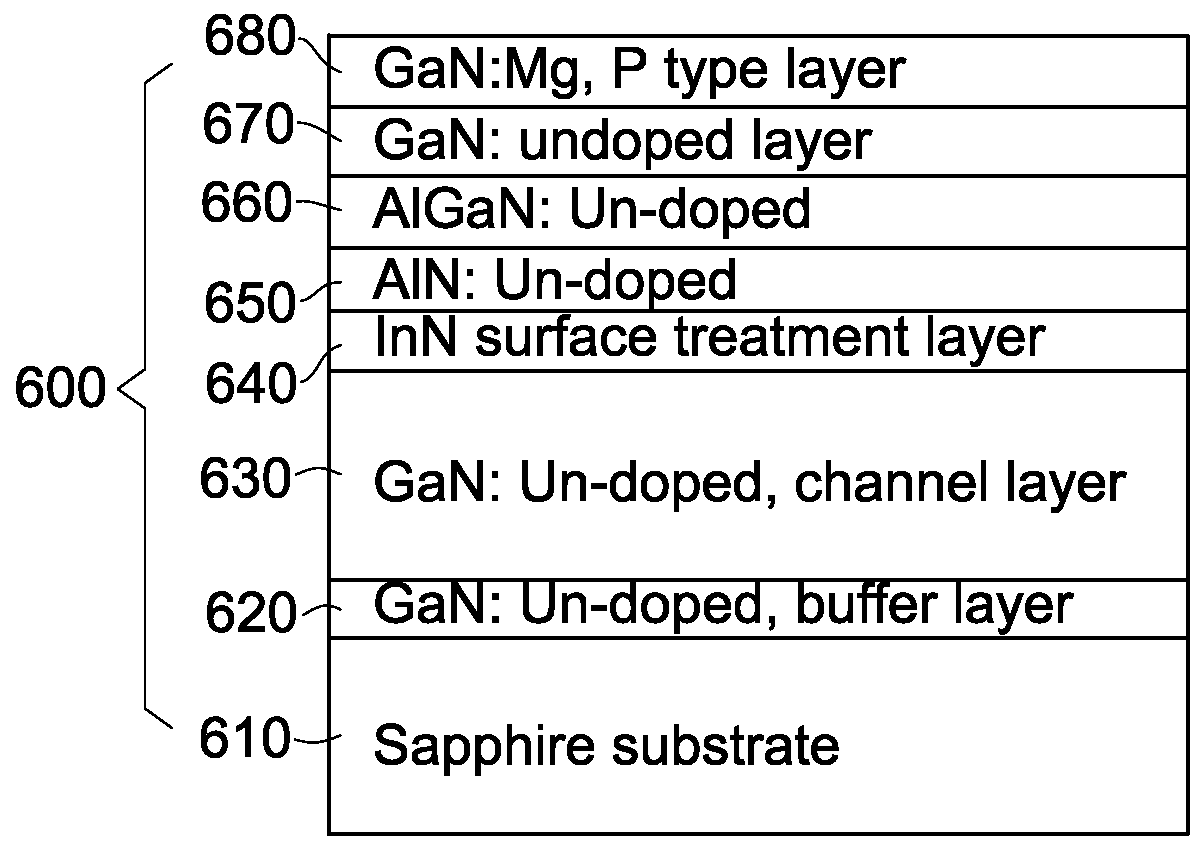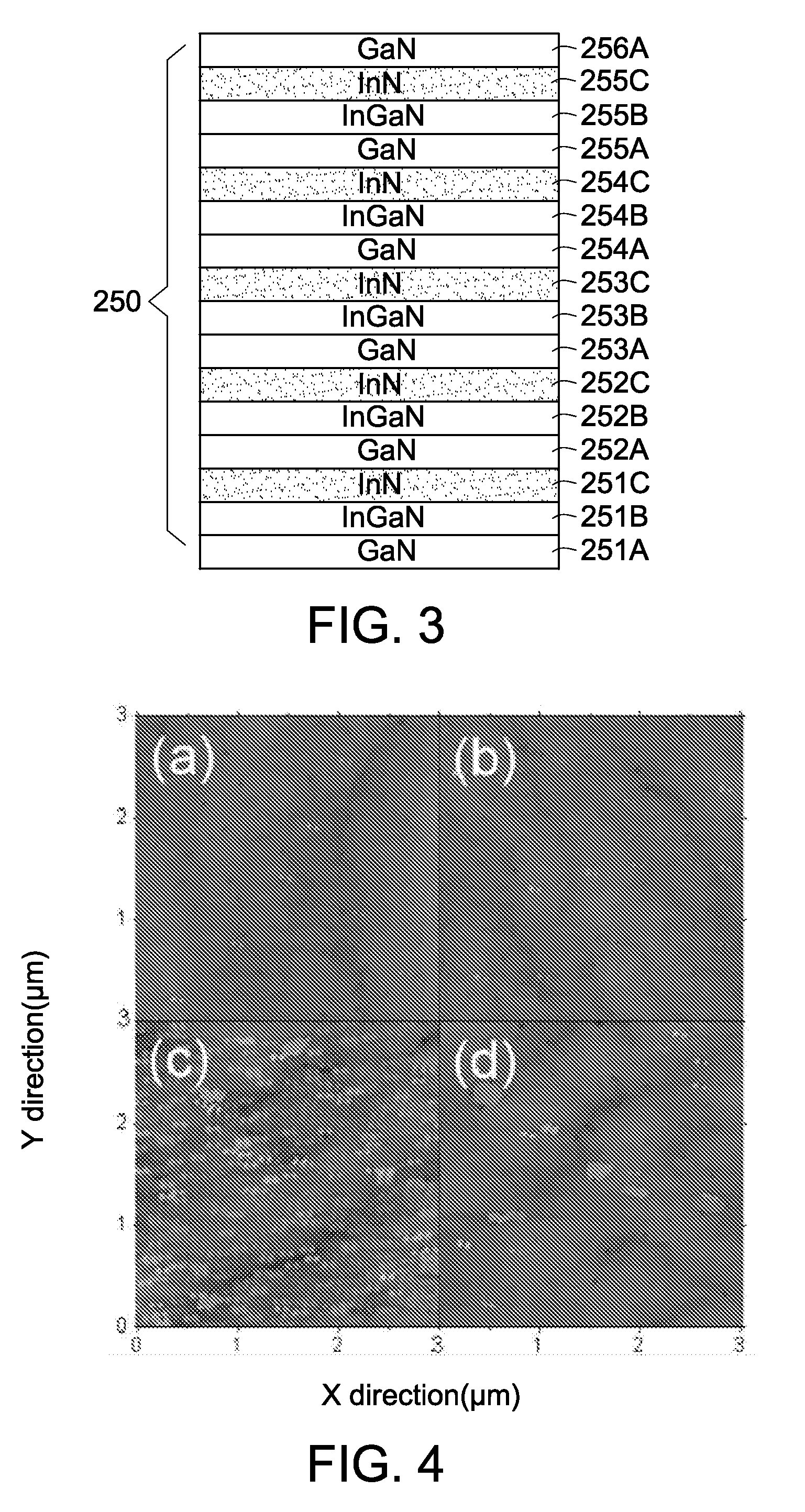Method of Growing Nitride Semiconductor material
a technology of nitride and semiconductors, applied in the direction of semiconductor devices, basic electric elements, electrical equipment, etc., can solve the problems of poor internal quantum efficiency, low crystalline quality, and low external quantum efficiencies of ingan green leds, so as to reduce the density of v-defects, increase yield, and increase flatness
- Summary
- Abstract
- Description
- Claims
- Application Information
AI Technical Summary
Benefits of technology
Problems solved by technology
Method used
Image
Examples
Embodiment Construction
[0019]Referring to FIG. 1, it is a graph showing multiquantum well (MQW) growth direction versus different flows for InN treatment active layer 100 manufactured according to a method of growing nitride semiconductor material of the invention. The method comprises the following steps.
[0020]First, flow Triethyl-gallium (TEGa) and ammonia (NH3) into a chamber to grow a first barrier layer 101A.
[0021]Next, flow Trimethyl-indium (TMIn) into the same chamber to grow a first well layer 101B.
[0022]Next, stop flowing TEGa to grow an InN treatment layer 101C in the chamber. Next, stop flowing TMIn and flow TEGa into the chamber again to grow a second barrier layer 102A.
[0023]Finally, an InN treatment LED of MQW is produced. The LED has a flat MQW structure with decreased density of V-defects and increased light emission efficiency.
[0024]Referring to FIG. 2, it is a sectional view showing the constituent layers of an InN treatment MQW LED structure 200 manufactured according to the method of t...
PUM
| Property | Measurement | Unit |
|---|---|---|
| semiconductor | aaaaa | aaaaa |
| flatness | aaaaa | aaaaa |
| density | aaaaa | aaaaa |
Abstract
Description
Claims
Application Information
 Login to View More
Login to View More - R&D
- Intellectual Property
- Life Sciences
- Materials
- Tech Scout
- Unparalleled Data Quality
- Higher Quality Content
- 60% Fewer Hallucinations
Browse by: Latest US Patents, China's latest patents, Technical Efficacy Thesaurus, Application Domain, Technology Topic, Popular Technical Reports.
© 2025 PatSnap. All rights reserved.Legal|Privacy policy|Modern Slavery Act Transparency Statement|Sitemap|About US| Contact US: help@patsnap.com



